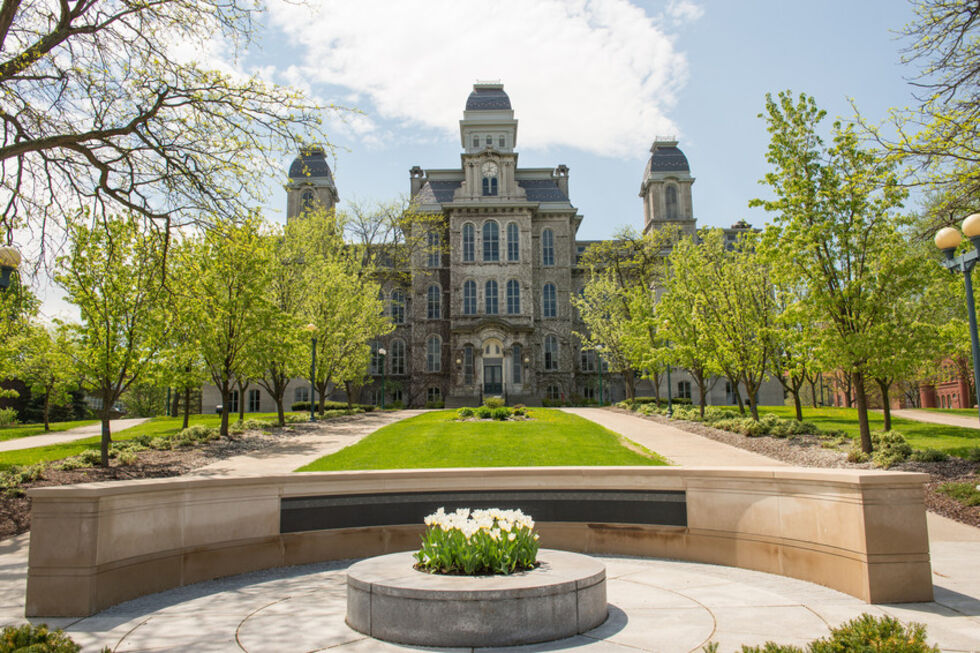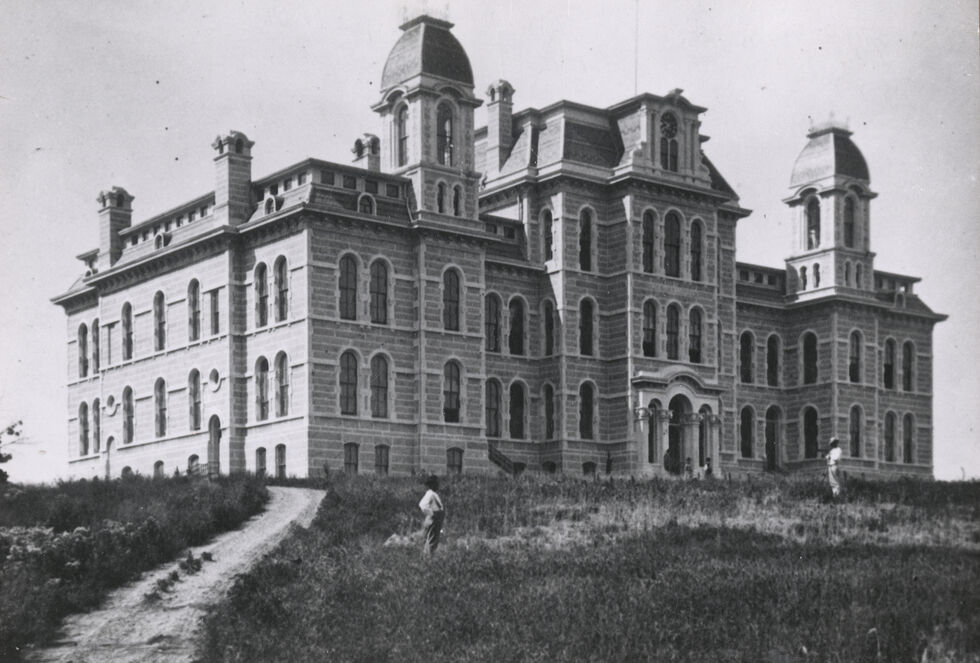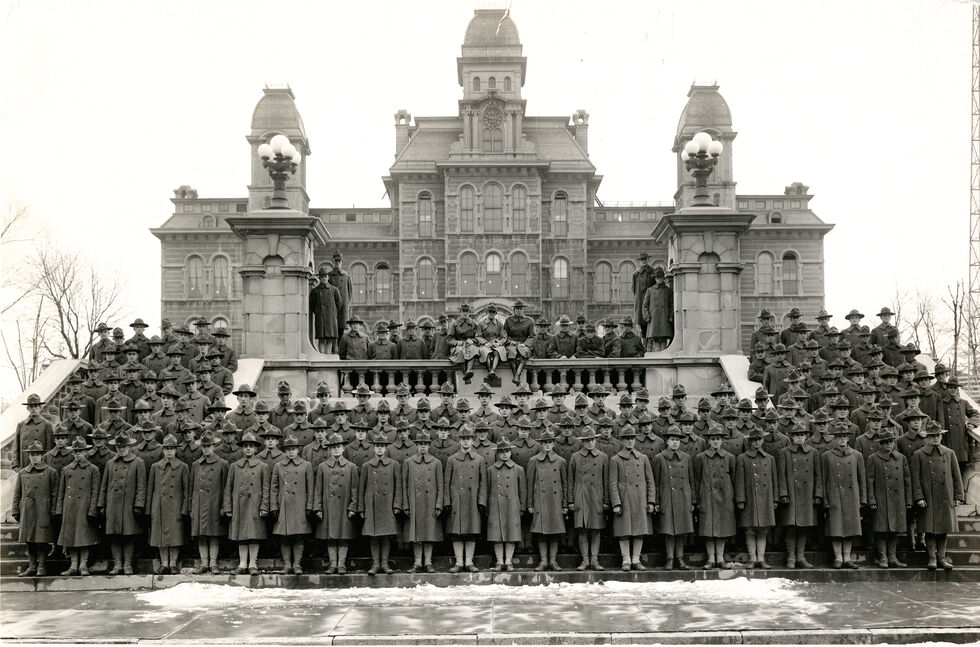Hall of Languages
"Hall of Languages College of Liberal Arts" by Horatio Nelson White , 1871-1873
The Hall of Languages provides classroom space for over two thousand students, as well as offices for several departments, including English and Textual Studies, Philosophy, and Religion. The Hall of Languages is a staple on the university campus, which the Daily Orange reported in 1940 as creating “a sense of pride that the glorious history of a university was unfolding before [students'] eyes." The Hall was entered on the National Register of Historic Places in October 1973, placing the building under the protection of the National Historic Preservation Act of 1966. The interior of the Hall of Languages was renovated in 1978, having begun to deteriorate within fifty years of construction, while the grand exterior of the building was left intact. The ivy that climbs up the walls of the Hall of Languages is a particular vine from a slip planted by John Cunningham, then janitor of the Liberal Arts building, in 1897. It was a part of the wreath that rested on the casket of Vice-Chancellor John R. French, who died that same year.
The Hall of Languages, originally called the Hall of Languages College of Liberal Arts, was built in 1873. It was to be the first of six buildings erected in French Second Empire style on campus, to include a Hall of Science, Hall of Philosophy, and Hall of History. The others Halls were never built due to a recession, leaving the Hall of Languages as the sole monument to the University’s earliest campus plan. When the Hall of Languages was completed in 1873, students and faculty assembled at downtown “Myers Block” (now East Genesee and Montgomery Streets), where they’d held classes during construction, to march in proud parade to their new home on “piety hill.” During the building's initial use, the grass in front of the Hall was high and cows grazed on “campus.” The $200 profit from the sale of this hay paid for the building’s mortgage.
SU University Archives; SU Photo and Imaging Archive; SU Archives Photograph Collection.


